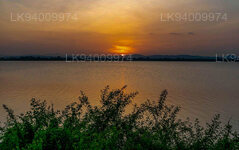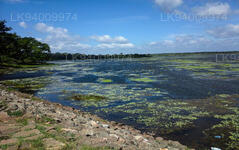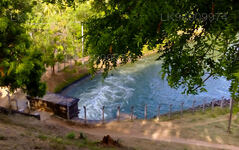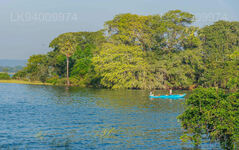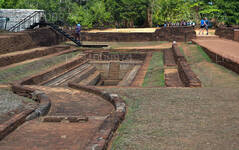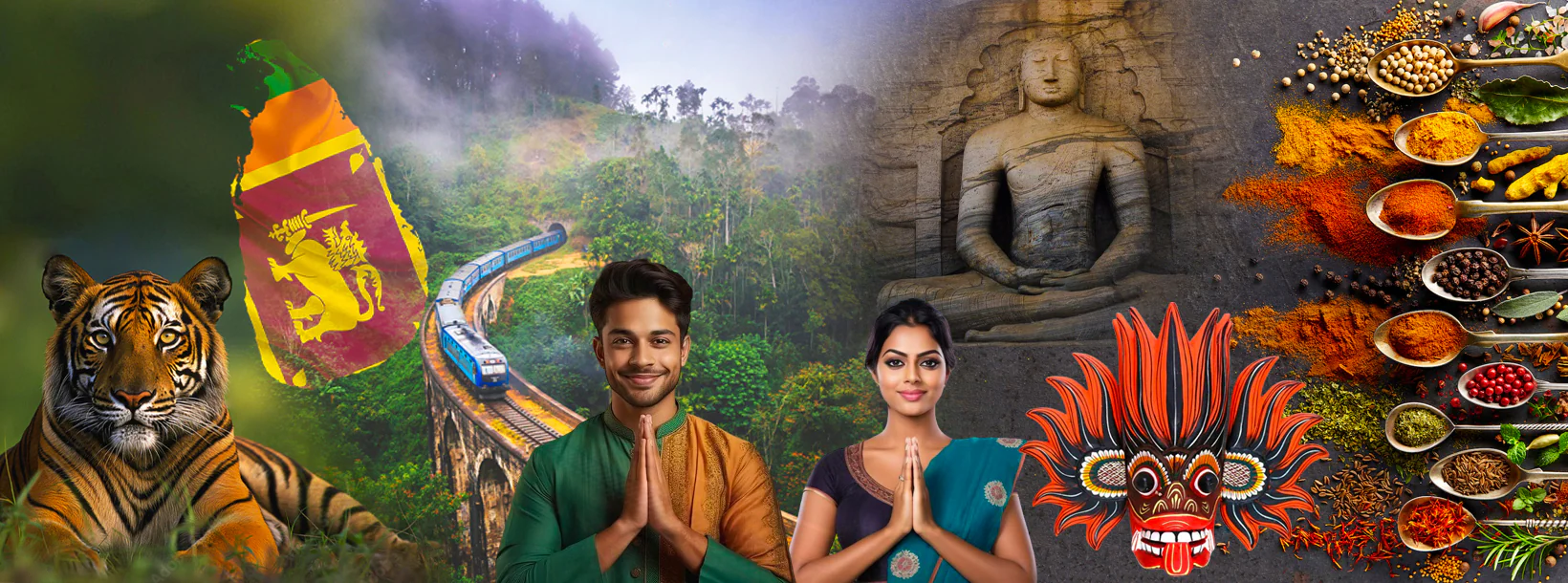
Sri Lanka
Sri Lanka, an island nation in South Asia, is renowned for its rich cultural heritage, diverse landscapes, and wildlife. Attractions include ancient temples, pristine beaches, lush tea plantations, and vibrant festivals. The country's unique blend of cultures, warm hospitality, and delicious cuisine make it a captivating destination for travelers.
Ancient Irrigation
Ancient Irrigation in Sri Lanka: The History
The Aryan Sinhalese civilization that emerged in Sri Lanka with migration from Bengal, East India in 543 BC took root in the Dry Zone, the rolling plains of North and North Central (Rajarata) and the South Eastern (Ruhunu) of ancient Sri Lanka. Though the land was excellent for agriculture, the difficulty in diverting enough water to their cultivation was the main problem. Hence the magnificent irrigation schemes were born. Aryan Sinhalese were dependent on an agriculture-based economy that prospered in their glorious past until the advent of the European colonizers.
For more than a Millenium and a half, the populace of the Sinhalese Buddhist civilization was concentrated in the region which is generally termed Dry Zone. Even today Dry Zone is clearly distinguishable from the rest of the land area of Sri Lanka by the variance in the density of population. The greater part of this region receives a mean annual rainfall of fifty to seventy-five inches, which though not meager in a comparative sense, is limited to a few months of the year. In this whole region, which covers about seventy percent of the total land area of the Island, only the northernmost peninsula and a stretch of land in the north-western coastal belt with water-retentive limestone rock-strata afford scope for extensive irrigation by means of wells.
Ancient Irrigation in Sri Lanka
Rice is the staple food, the cultivation under submerged conditions requires an abundant supply of water. The rice fields in the dry zone of Ceylon receive an annual rainfall of fewer than 75 inches most of which is brought about by short spells of heavy precipitation. Very often this quantity represents only a fraction of the water requirements for double-cropped rice and the rice fields of these areas. Therefore heavily dependent on supplementary irrigation from tanks and reservoirs. The intermediate zone and the wet zone however receive higher rainfall, which is fairly evenly distributed throughout the years. This condition permits the growth of rice in certain areas without supplementary irrigation. Nevertheless, there are many rice fields in the wet zone, which are irrigated from streams and channels flowing from the adjoining residual lands.Ancient Irrigation in Sri Lanka: Starting Small
In the early settlements of the Dry Zone in Sri Lanka, irrigation played a vital role to nurture the fledgling Aryan Sinhalese civilization. Without artificial storage of water, human existence in the North Central Province would have been impossible. In the beginning, there were small-scale village reservoirs with a simple channel system. Without artificial storage of water, human existence in the North Central Province would have been impossible. The North Central Province, although apparently flat, is, in reality, undulating, and the ancient tank builders took advantage of the nature of the terrain to make strings of tanks in the valleys called the small tank cascade system.
Today Sri Lanka has about 10,000 village tanks irrigating the villages.
Ancient Irrigation in Sri Lanka: The Technology
Together with the rise in population irrigation engineering developed bringing advanced and ambitious irrigation works. According to historical descriptions building, giant-sized reservoirs had been started in the 1st century B.C. during the reign of King Wasabha (67 – 111 BC). According to the historical records the king built 11 large reservoirs and two irrigation canals.
Construction of large reservoirs had been started in the 1st century B.C. during the reign of King Wasabha (67 – 111 BC). Historical records narrate that the king built 11 large reservoirs and two irrigation canals. The first great reservoir of the world ever constructed, according to Henry Parker, a British colonial irrigation engineer (1873-1904) in British Ceylon (1815-1948), was Panduwewa or Panda Wewa (1,239 acres) of Sri Lanka built by King Dappula II (807–812 AD). That is when the great lakes of Egypt, which are merely immense natural hollows into which streams were turned, are not considered.
The ingenuity of the Sinhala irrigation engineers is best exemplified by the invention of a sluice called “biso kotuwa”. The “biso kotuwa” is the equivalent of the valve-pit, which functions in the regulation of the outward flow of water and is therefore essentially an invention made by the Sinhala irrigation engineers more than 2200 years ago. It has remained essentially unchanged since then. “It was this invention alone which permitted the Sinhalese to proceed boldly with the construction of reservoirs that still rank among the finest in the world. Without some efficient means of regulating the discharge of the water through the sluices, the provision of reservoirs for storing water could never have extended beyond the minor tanks”.(Ref: H. Parker, Ancient Ceylon, 1909)
As a result, in the dry Zone emerged three main complex irrigation systems, i.e. Malwathu Oya-Kala Oya, Mahaweli-Amban Ganga, and Walawe-Kirindi Oya irrigation systems.
Today, Sri Lanka has 59 giant tanks spread out in 13 districts of the dry zone irrigating the paddy cultivation. Among the largest ancient tanks are Parakrama Samudra, Minneriya Tank, Kaudulla Tank & Kantali Tank with gross capacities of 109,000 Ac. ft, 110,000 Ac. ft, 104,000 Ac. ft. and 114,000 Ac. ft. The largest modern tank is Senanayake Samudra with a gross capacity of 770,000 Ac. ft. (Ref. irrigation Department of Sri Lanka, 2 Nov. 2010 erp.irrigation.gov.lk)
A publication by the United States Bureau of Reclamation referring to the history of earth dams in the world, mentions “one earth dam eleven (11) miles long, seventy (70) feet in height and containing about 17 million cubic yards of embankment in Ceylon (Sri Lanka) in the year 504 BC”.
Ancient Irrigation in Sri Lanka: Canals
Sinhalese built long canals with exceedingly low gradient, such as 87 km long Jaya Ganga, which carried water from Kalawewa to the city tanks of Anuradhapura with a gradient of less than 10cm per kilometers within its first 27 km, it continued to behave as a natural stream.
The ancient irrigation networks of reservoirs continue to extend the lifeline to the ancient island of Sri Lanka. Over and above the irrigation, the conversation of forests, construction of ponds and waterways, reservoirs and irrigation in line with United Biology were considered great meritorious acts in accordance with Buddhism, without which the Sinhalese wouldn’t have survived the Dravidian invasion and colonial disorder in Sri Lanka.

